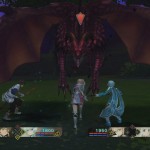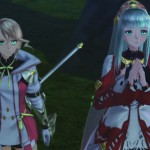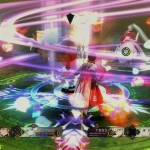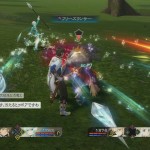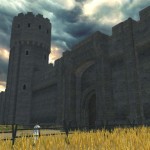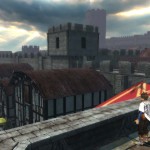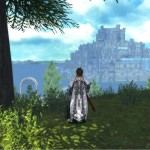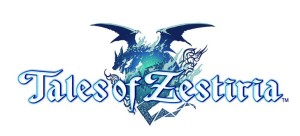 It’s been a year since Bandai Namco put out Tales of Hearts R for the Vita, and once again RPG fans have been awaiting this game since it launched earlier this year in January in its home country. Now it’s finally here, and it delivers a solid Action-RPG experience, despite having a less interesting story and characters. It does have some tweaks to the system which might make players a little overwhelmed though.
It’s been a year since Bandai Namco put out Tales of Hearts R for the Vita, and once again RPG fans have been awaiting this game since it launched earlier this year in January in its home country. Now it’s finally here, and it delivers a solid Action-RPG experience, despite having a less interesting story and characters. It does have some tweaks to the system which might make players a little overwhelmed though.
The game’s plot is about a young man named Sorey, who lives in a village with a race of beings known as Seraphs, which only humans with exceptional senses can see or hear. His idyllic life ends when an exploration into the local ruins has him encounter a young human woman named Alisha. This meeting prompts him to explore the world. Shortly after leaving, he joins a ceremony in a town, but monsters called Hellions attack and he pulls out the ceremonial sword and makes an oath to become the Shepard, the only being strong enough to permanently defeat the Hellions. Now his job is to purge the world of the Hellions and the dark influence it they have on the world. It’s a simple and generic Tales story that goes back to its Phantasia roots in terms of the level of technology presented in the game. The characters will interesting in their own right, are altogether less interesting than those of Xillia.
While the gameplay and graphics engine are using Xillia’s, there has been some tweaking to make the game a bit more interesting. The core of the battle system resembles Graces F this time though, but it’s been made a lot more strategic, focusing on exploiting enemy weakness and stunning them to inflict even more damage. Dodging is also more important, as is managing you SC gauge, which replaces your TP used in most Tales games. The twist with the SC this time is that your attacks do more damage the lower the gauge is, but that comes at the cost of being unable to do combos at the even greater risk of taking more damage. It’s an interesting risk vs. reward system that makes you prioritize what you are doing rather than hitting the cross or circle buttons. Although if you play on the lower difficulties you can still do that to an extent, but playing on higher difficulties reward players with potentially higher Grade, money, and EXP yields.
Speaking of battle rewards, the game often will give players weapons or armor as loot. This ties into the game’s passive skill system. The way it works is that each armor class has a few skills which are placed in a table. Depending on how each skill is arranged, you can trigger special links that significantly boost your stats. So even if you find a piece of equipment that might increase your defense, it might be a better idea to use another piece of equipment for that set of skills or link it grants. This might overwhelm players at first, but the game’s tutorials will acclimate the player slowly, and frequently. In fact, so frequently that you might receive duplicate tips when you find Celestial Record slabs, which give more tips and grant AP for the game’s other skill system. The battle skills like free run or auto guard are much like the other entries in how they operate. What’s different now though is that they now need to be unlocked through conditionals that work like a mini achievement system. Other tweaks involve things like cooking, which no longer need ingredients, as characters now just make items out of nowhere. They will often fail unless they have a high level though. There’s also a Lord of the Land system which uses grade to allow things like fast travel, which is a good way to use the mechanic. The maps are now more expansive and are more obstacle based, making exploration more rewarding once you gain the field skills to go to areas that you couldn’t access before.
The game’s score is great and the English dub is pretty good, but you can choose to play with the Japanese Audio track. The only caveat being that you can’t switch it on the fly, forcing players to go back to the title screen before making the switch. Other than that, the game looks, plays, and sounds great. And while the story is simple and the characters less interesting than previous entries, it’s still a great comfort Food like experience for any JRPG fan.
Gameplay
Graphics
Sound
Overall

